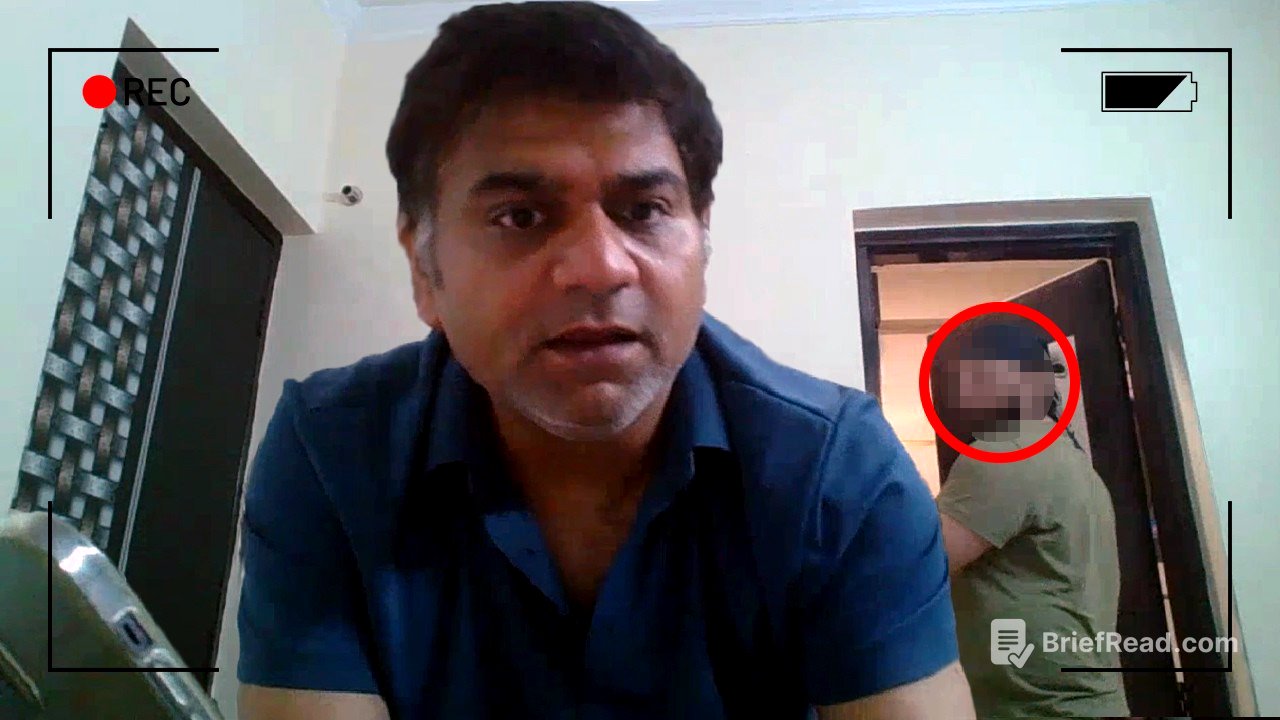TLDR;
This video exposes a family-run scam operation based in India that targets victims with fake Microsoft pop-ups. The investigation reveals the father as the mastermind, his son learning the trade, and other family members assisting. The scam involves gaining access to victims' computers, manipulating network scans, and ultimately draining their bank accounts. The video culminates in a confrontation with the lead scammer, exposing his operation and reporting him to the authorities.
- The scam operates by frightening victims into believing their computers are hacked.
- The father and son team would log into the victim's bank account online and drain their money.
- The video exposes the scammer and his accomplices, reporting them to the authorities.
Introduction to the Scam Family [0:00]
The video introduces a family of scammers operating out of a small town in New Delhi, India. The family consists of the father, who is the mastermind behind the operation, his son, whom he is teaching to scam, and other family friends or relatives who assist in the scams. They run a fake Microsoft pop-up scam, which involves scaring victims into thinking their computers have been hacked and instructing them to call a fake Microsoft or Windows support number.
The Scam Technique [1:36]
The scammers, led by the father who introduces himself as Mr. Sam Wilson, instruct victims to type personal information into the command prompt. They then manipulate a network scan to make it appear as though the victim's network has been compromised by hackers. The father claims to be a Microsoft employee of 19 years and informs the victim that illegal material has been downloaded on their network, threatening them with fines and jail time.
Son's Scamming Skills and Bank Account Access [4:22]
The father often sends his son to another room to complete the scam. The next crucial step involves logging into the victim's bank account online to drain their money through wire transfers or checks. The video then includes a promotion for Incog, a service that removes personal information from data broker sites to protect privacy.
Victim's Bank Account and Law Enforcement Intervention [6:25]
Once the victim complies, the scammers instruct them to log into their bank account online, taking pictures of the account to assess the balance and transaction history. They then decide on the best method to steal the money, usually through checks or wire transfers, and take a picture as proof of completion. The video highlights instances where law enforcement contacts were able to help some of the victims, preventing them from losing money.
Scammer's Incompetence and Frustration [9:20]
The video shows instances of the son's incompetence and unprofessionalism while scamming, including pretending to be from Amazon and making inappropriate comments. He is often corrected and frustrated by the father, who seems to be the more skilled scammer.
Confrontation and Exposure [12:05]
The video culminates in a confrontation with the father, where the content creator poses as a victim and reveals his true identity. The scammer, identified as Mr. Sarvesh, is questioned about his activities and his accomplices. Visibly scared and unwilling to talk, he puts a paper bag over his head and covers his webcam. The content creator states that he has reported all of the scammer's information to the police.
